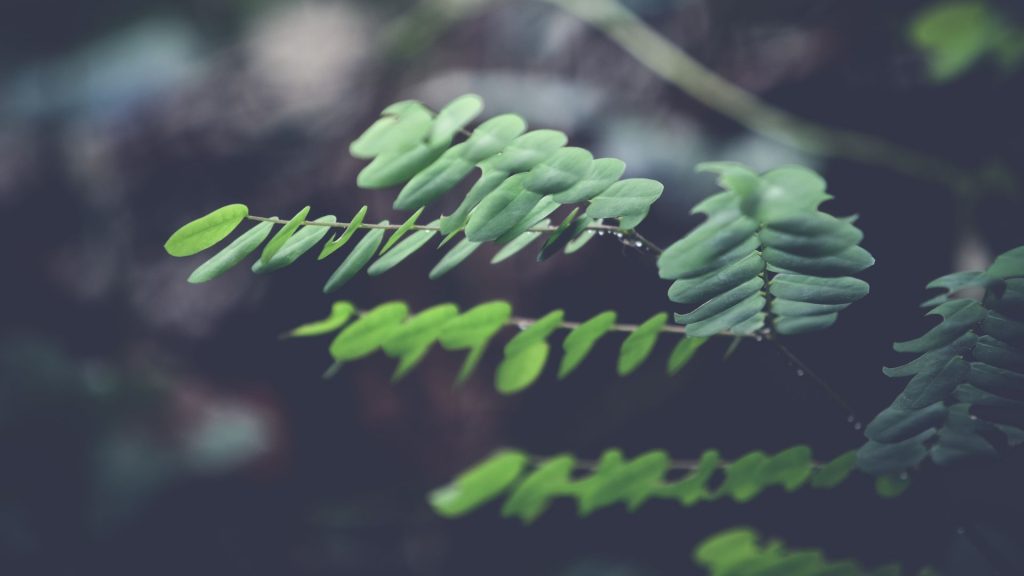The silver dollar eucalyptus (Eucalyptus cinerea) is a huge evergreen giant tree. It belongs to the Myrtle family and is probably one of the fastest-growing trees.
Originally from Australia and New Zealand, it is a favorite treat for animals like the koala. In the zoos where these cute animals are kept, eucalyptus trees must necessarily grow for their better life and existence, because koalas feed exclusively on the bark and leaves of these plants.
Silver eucalyptus is a medium-sized tree with a rough, fibrous bark covering large branches and tree trunks. The reddish-brown or gray-brown color of the bark becomes creamy white when it comes to the terminal and small branches of the tree-covered with smooth bark.
Bright-gray almost rounded young leaves, as a rule, have short petioles. Growing up, they either simply increase in size, or can change their shape to lanceolate, from narrow-lanceolate to wide-lanceolate. The color of the leaf plate also changes, becoming more bluish from a wax coating.
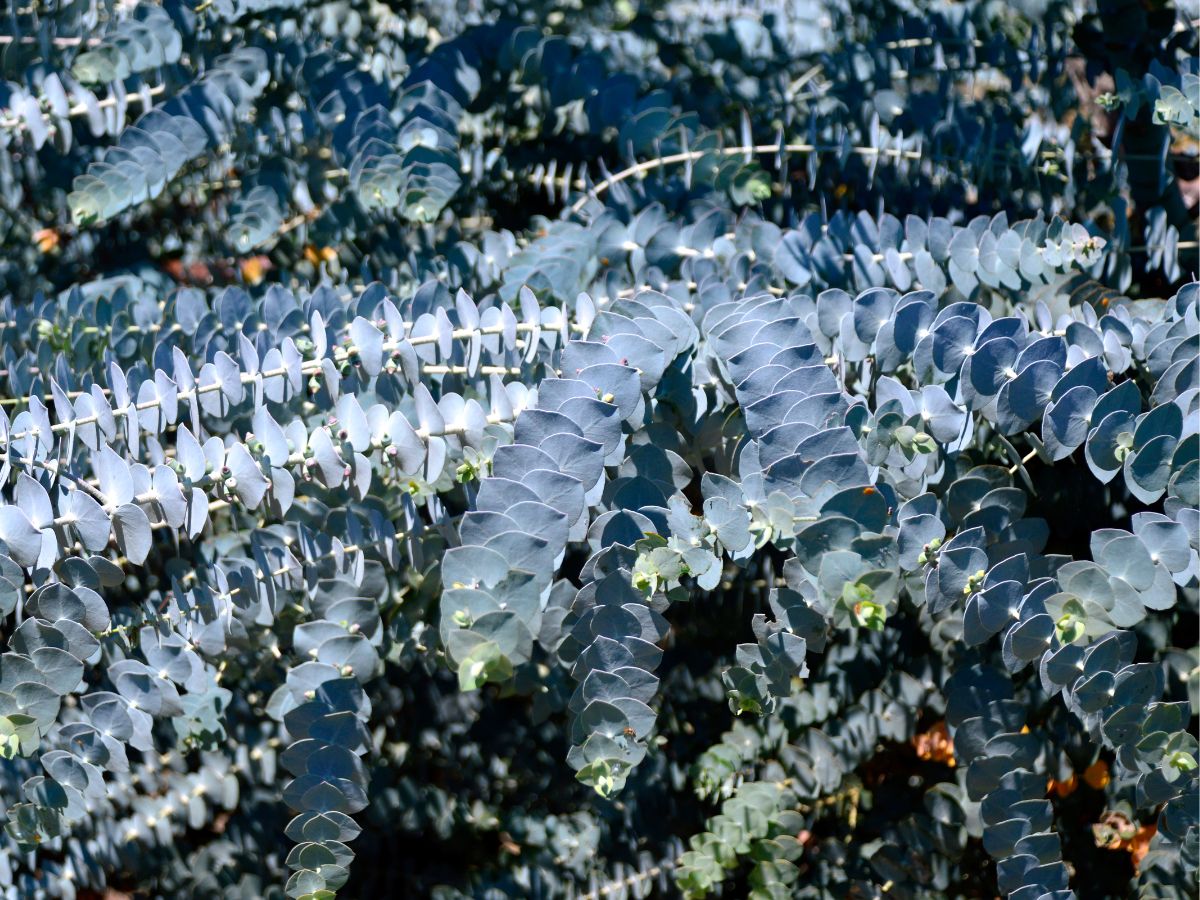
In the axils of the leaves, short peduncles are born, crowned with three white inflorescences with numerous graceful stamens, protected by a conical cap made of accrete sepals. The flowering time depends on the place of growth.
Inflorescences are replaced by pear-shaped or spherical fruits.
What Does Its Name Mean?
The generic name is based on the Greek language, more precisely, on two Greek words that eventually gave birth to the Latin word “Eucalyptus”, meaning “well covered.” And the inflorescences, consisting of graceful and fragile numerous stamens, are “well covered” in the plant. The stamen is covered with a “cap” formed by nature by splicing sepals. As a result, the inflorescence loses its petals, delighting the world with multicolored fluffy stamens.
The specific name “cinerea” is explained by the color of the leaves, which seem to be sprinkled with grayish ash, which is why they turn into dull grayish-blue broad-lanceolate plates.
Eucalyptus cinerea has many popular names that highlight its peculiar small details that distinguish the tree from other species of the genus. For its oval blue-gray leaves, eucalyptus is called the “Silver dollar tree”.
Caring for Silver Dollar Eucalyptus as a Houseplant
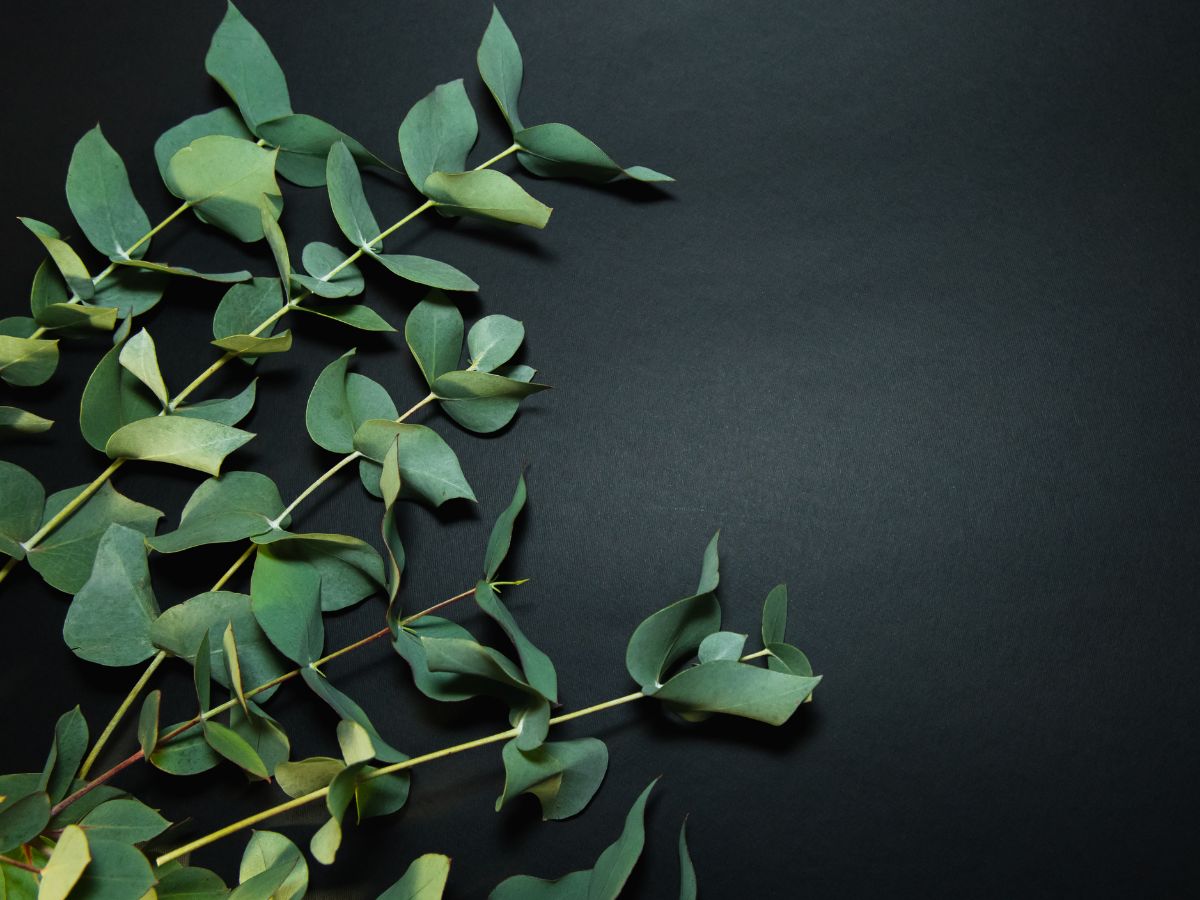
Indoor eucalyptus is very picky about growing conditions. A cool and well-lit place is suitable for him. Such conditions are extremely difficult to create in a residential area, which is why the plant is so rare in indoor culture. However, it is quite possible.
Lighting
The tree needs stable, very bright lighting, while it is not afraid of the direct rays of the sun. Even if you put it on an oriental window sill, the bush would feel uncomfortable. For eucalyptus, a south window is great, or at least a southeast or southwest window. In the cold season, the plant needs to be provided with additional lighting.
Temperature
The tree reacts negatively to high air temperatures at any age. Even in the summer, you should provide a temperature of about 64 °F (ca. 18 °C).
Watering
In the summer, the plant needs to be watered abundantly. After some time after the procedure, be sure to pour out the water from the pan. The soil mixture is moistened only after its top layer dries out a little. With the onset of the autumn period, watering should be reduced, while the surface of the substrate should dry out only a little more.
It is recommended to moisten the soil mixture in the pot with melt or rainwater. Its temperature should be close to room temperature.
Fertilizer
For feeding such a crop, special fertilizers for bonsai or eucalyptus are best suited. If they could not be found, then you can use a universal fertilizer for decorative deciduous crops with a low content of nitrogen and phosphorus. You can feed the plant once a month all year round.
Remember that at home, the plant can be severely damaged by any mistake. If the foliage withers, then a new one would not grow in its place. It crumbles with ease, even due to minor violations in care.
Silver Dollar Eucalyptus Care in the Garden
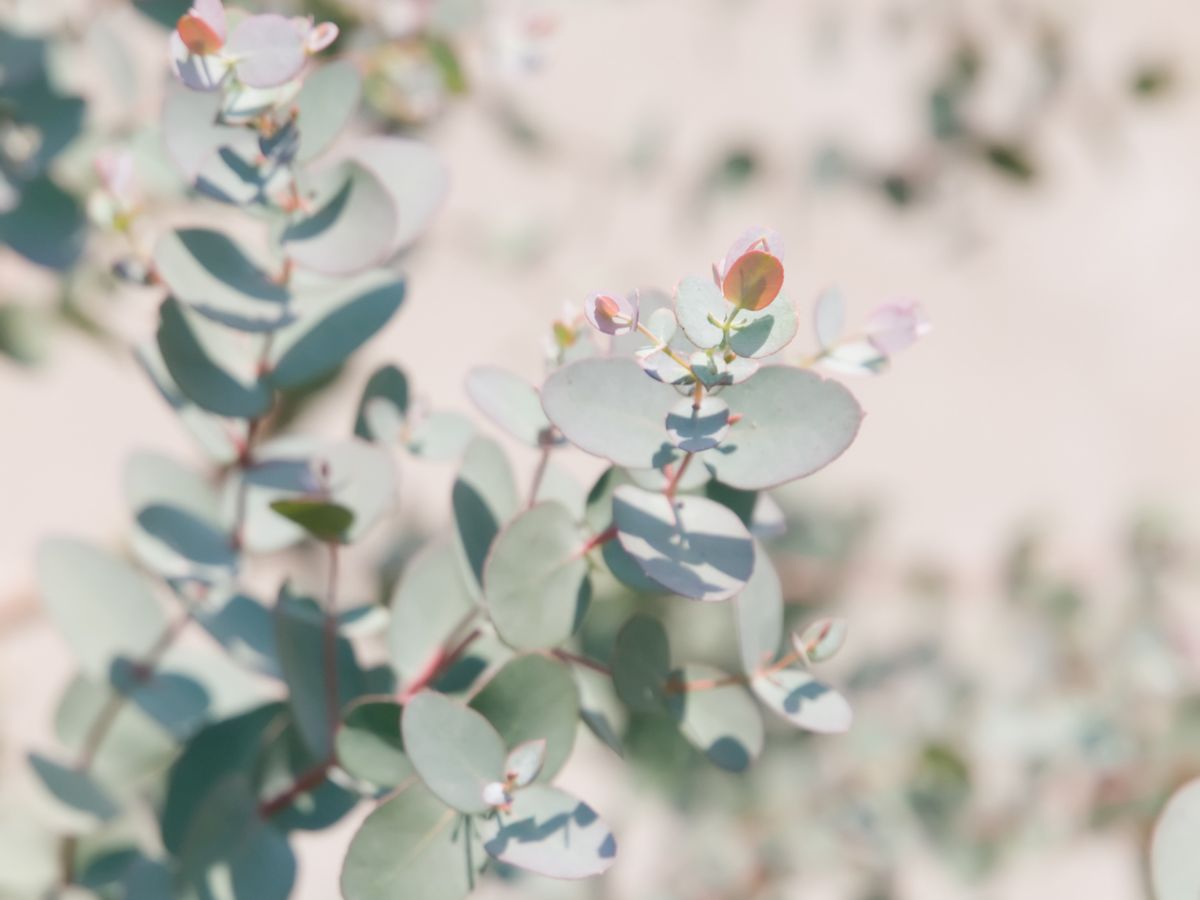
Eucalyptus cinerea care is very simple if the trees have already taken root. Once the roots have taken root, this plant requires little maintenance. The silver dollar eucalyptus growing zone is from 8 to 10, but it can also be grown in pots and placed indoors in cooler areas in winter. Plant eucalyptus in full sun and, predominantly, well-drained soil. If you want to control the height of the plant, you can prune it in winter and summer. Fertilize silver dollar eucalyptus bush in spring when the soil is nutrient deficient.
How to Grow Silver Dollar Eucalyptus
You can propagate silver dollar eucalyptus with both seeds and cuttings. Experienced gardeners prefer the first method, since growing by cuttings is often difficult and unreliable.
Growing Silver Dollar Eucalyptus from Seed
- Prepare the seed pot by filling it with well-drained potting soil containing perlite and sand.
- Sprinkle the surface of the soil with eucalyptus cinerea seeds and lightly dust them with sand. For safety, you can press down on the seeds to tamp them into the soil.
- Water the seeded silver dollar eucalyptus from below by placing the pot in water for about 20-30 minutes. After the time has elapsed, drain off the remaining water.
- Place the container with seeds in a warm, humid place. Note that the ideal germination temperature is 68-72 ° F. Make sure the humidity level is between 70-100% as this would provide the best results. Germination takes about 3 months.
- When the silver dollar eucalyptus seeds have germinated, place them in a cooler, sunnier place. Temperatures between 55 and 60 ° F over several weeks produce thicker and stronger seedlings.
- Plant the seedlings in 1 or 2-gallon pots containing potting soil mixed with 5-10-10 granular fertilizers when they are 4-5 inches tall. In order not to accidentally break the stems that have not yet matured, carefully take the seedlings from the leaves.
Before planting seeds, make sure they are safe and sound. You can purchase eucalyptus seeds in a specialist store or online.
Silver Dollar Eucalyptus Propagation with Cuttings
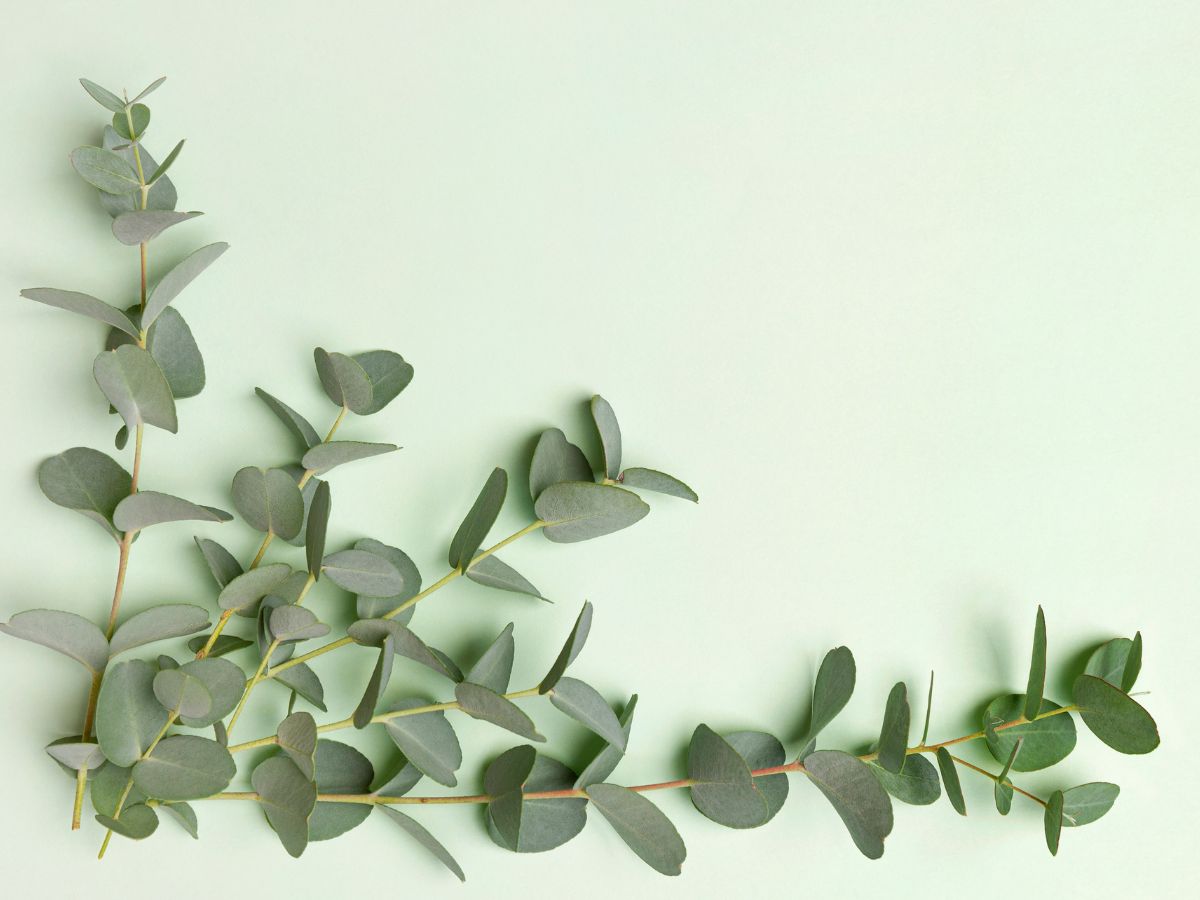
Young shoots of the current season are cut off at the end of summer with a length of 2-6 in. The cut should be just below the leaf node. The lower leaves are cut off. Cuttings are placed in an evenly moist mixture of 3 parts compost or universal soil and 1 part perlite.
The container should be covered with a transparent bag and placed in a warm place away from direct light. You can water by spraying water onto the soil surface, or place the container on a pallet of water.
The cuttings should form roots in about 30 days. Pull gently to feel resistance from the formed roots.
After rooting, remove the bag and place the seedlings in a lighter place, the soil should dry out a little between waterings. The seedlings are ready for transplanting after the start of new growth.
Silver Dollar Eucalyptus Tree Facts
- Eucalyptus is one of the fastest-growing trees in the world.
- Did you know that the oils produced in the leaves repel insects? Not only is this tree resistant to pests, but it can also repel mosquitoes and fleas. Silver dollar eucalyptus is also quite disease resistant.
- The leaves of different types of eucalyptus trees have their shape and size, but they are always turned with an edge towards the sun: thus, eucalyptus trees protect themselves from moisture evaporation. In Australia, eucalyptus also serves as a compass: the leaves of the tree are located along the meridian, their edges are turned to the north and south, and the planes are to the east and west.
The silvery leaves of the original shape, beautifully arranged on the branches of the tree, make the silver dollar eucalyptus plant attractive for decorating gardens and parks.
In addition, like other plant species of the genus Eucalyptus, in the first years of life, silver dollar eucalyptus quickly increases the height of its straight trunk, delighting the gardener. The growing silver dollar eucalyptus is quite a fun activity that can give you a wonderful plant!


